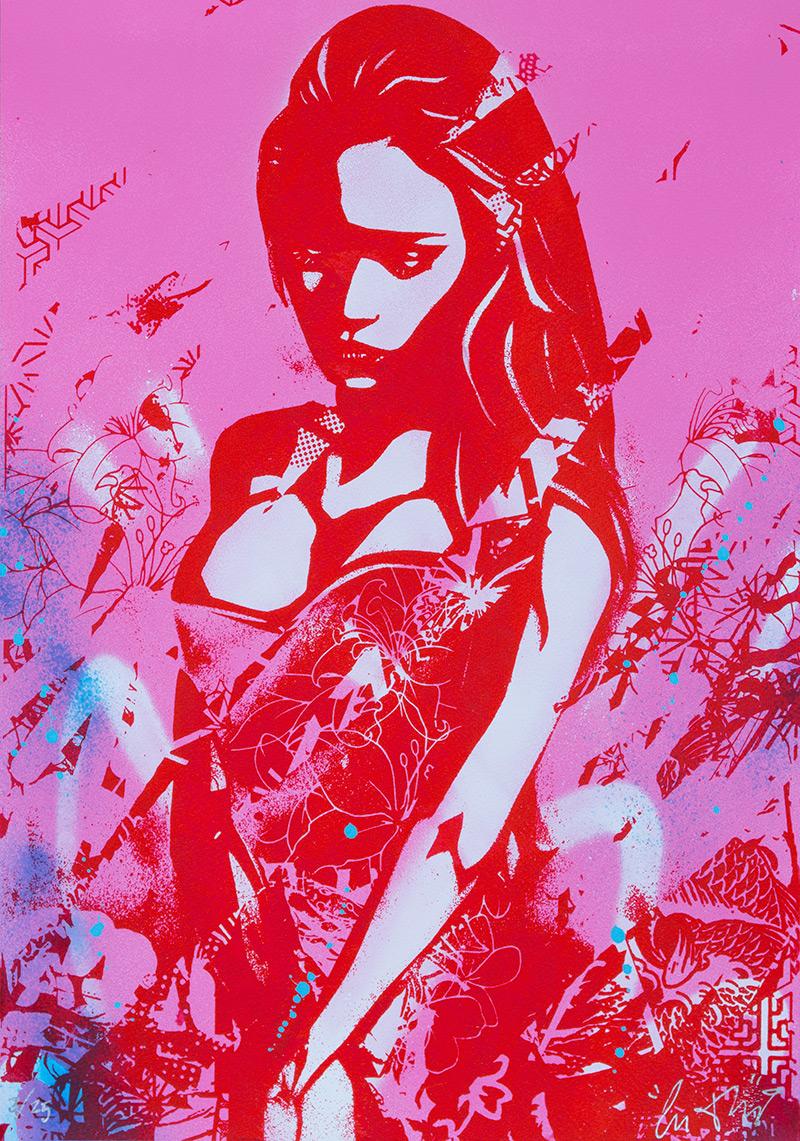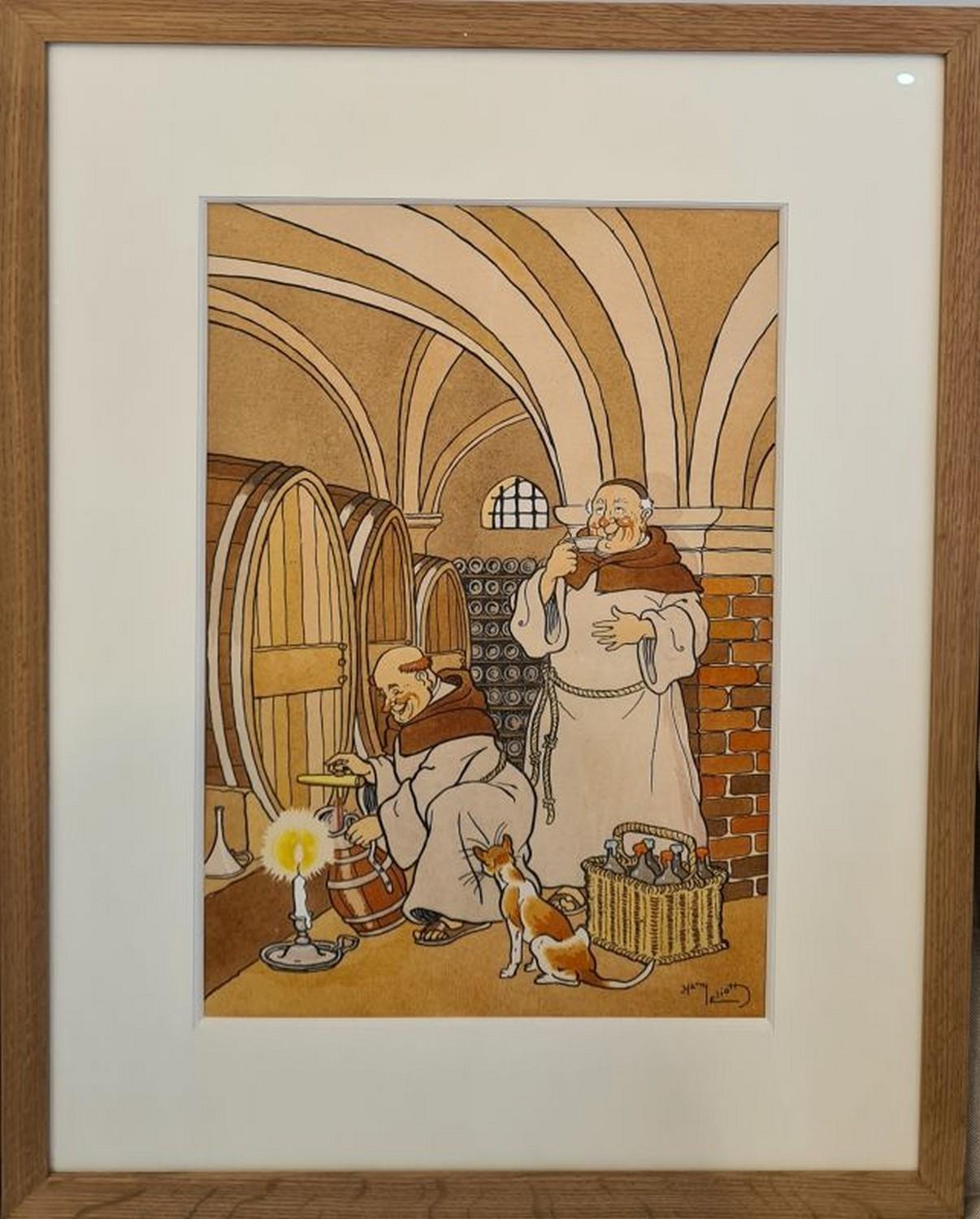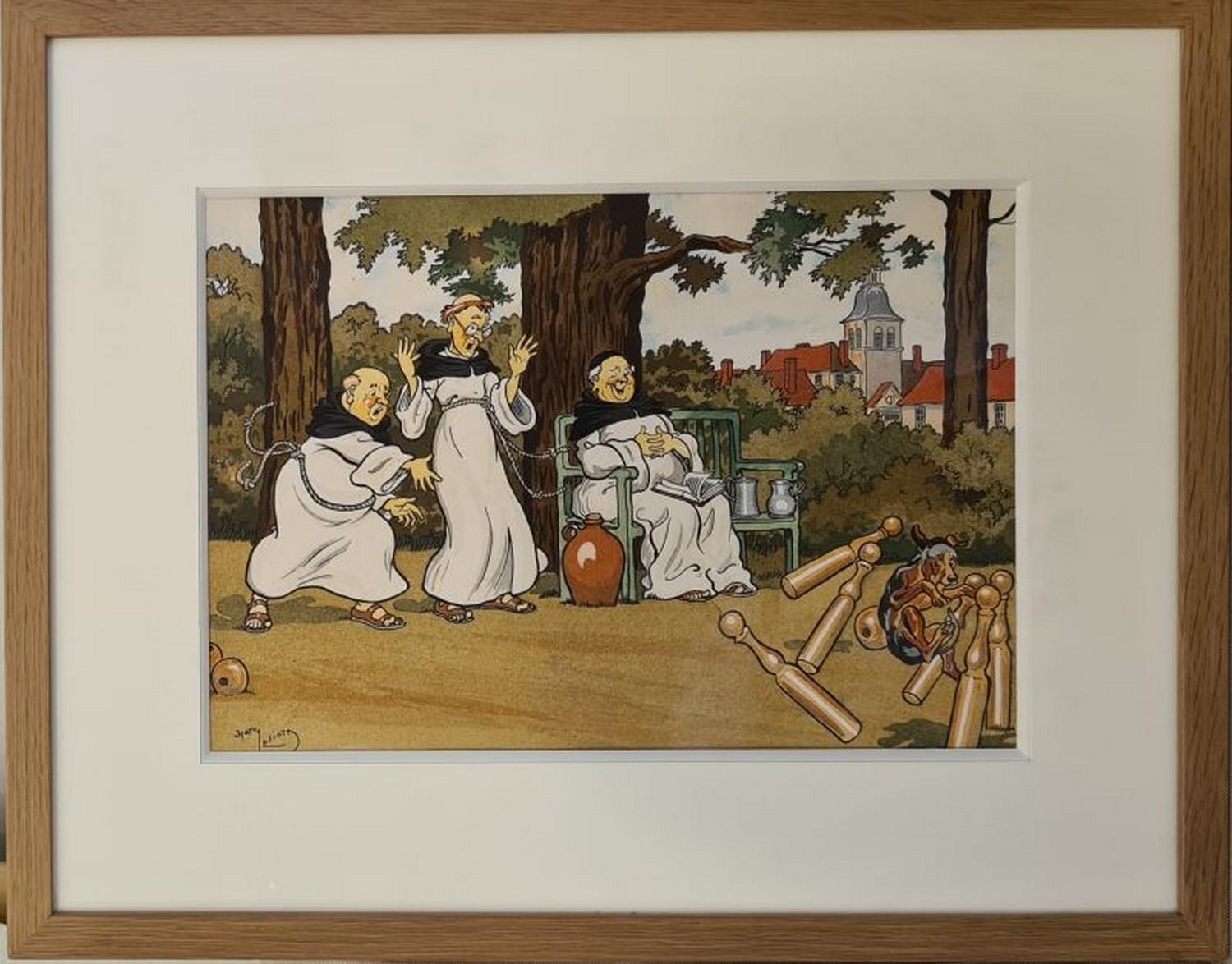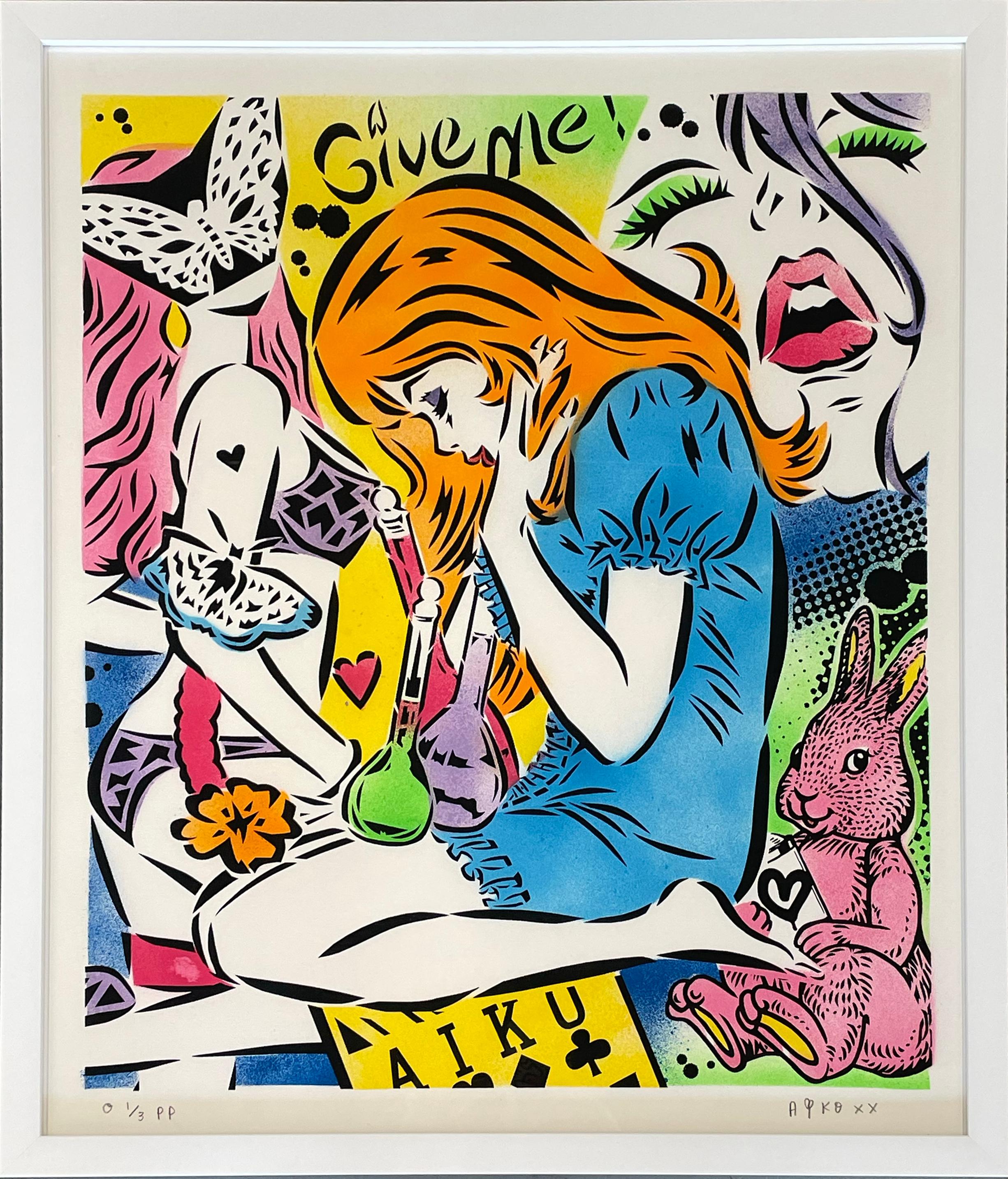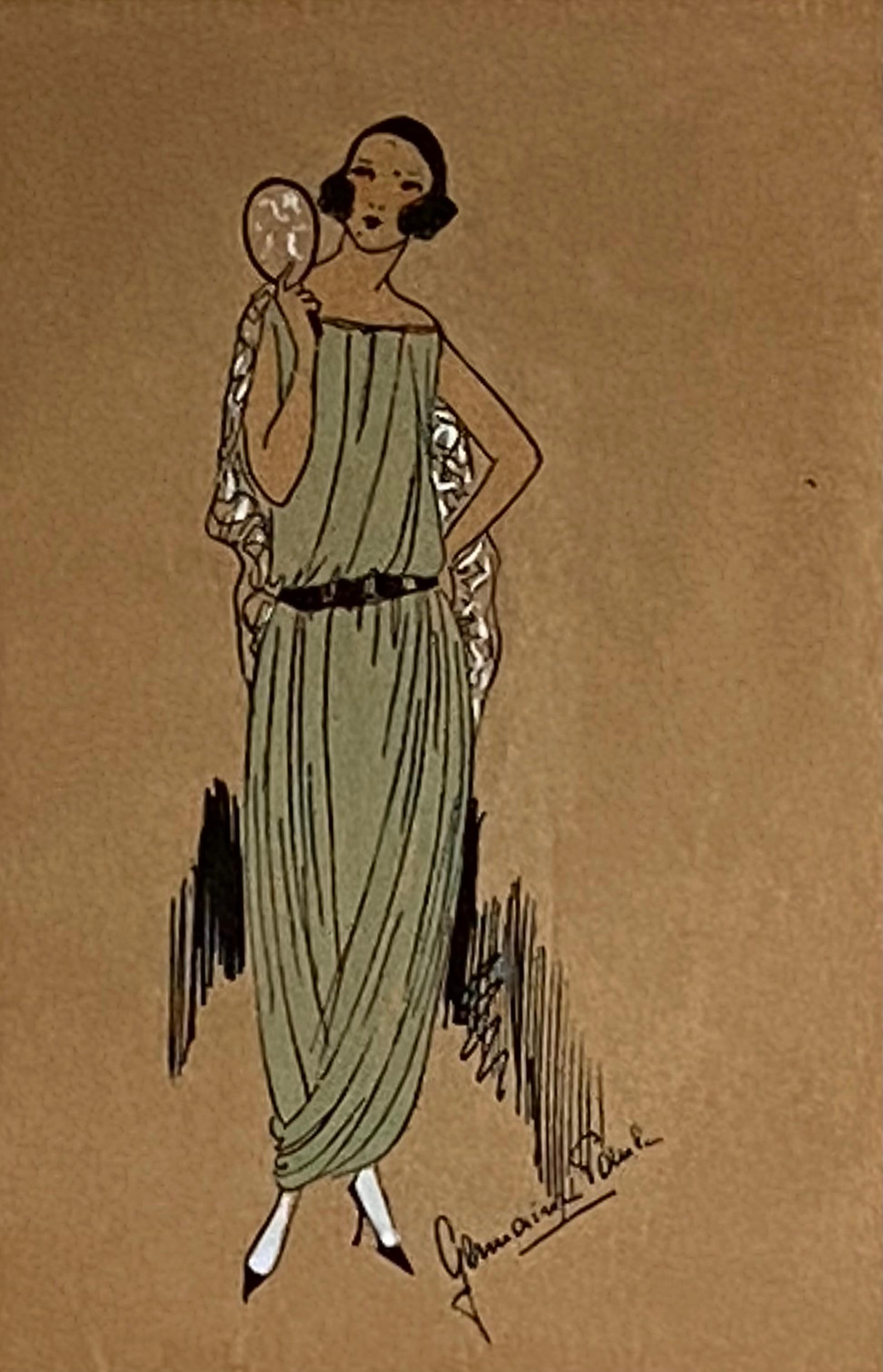Want more images or videos?
Request additional images or videos from the seller
1 of 3
Harry EliottNo title1950ca
1950ca
About the Item
Stencil
The work signed in the plate
20.50 cm. x 32.50 cm. 8.07 in. x 12.8 in. (image)
41.00 cm. x 52.00 cm. 16.14 in. x 20.47 in. (frame)
LCD5582
- Creator:Harry Eliott (1882 - 1959, French)
- Creation Year:1950ca
- Dimensions:Height: 8.08 in (20.5 cm)Width: 12.8 in (32.5 cm)
- Medium:
- Period:
- Condition:Excellent condition.
- Gallery Location:Paris, FR
- Reference Number:
About the Seller
5.0
Vetted Seller
These experienced sellers undergo a comprehensive evaluation by our team of in-house experts.
Established in 2007
1stDibs seller since 2018
138 sales on 1stDibs
Typical response time: 1 to 2 days
- ShippingRetrieving quote...Ships From: PARIS, France
- Return PolicyA return for this item may be initiated within 3 days of delivery.
More From This SellerView All
- No titleLocated in Paris, FRStencil The work signed in the plate 24.00 cm. x 35.00 cm. 9.45 in. x 13.78 in. (image) 42.50 cm. x 53.00 cm. 16.73 in. x 20.87 in. (frame) LCD5581Category
1950s Abstract Figurative Prints
MaterialsStencil
- No titleLocated in Paris, FRStencil The work signed in the plate 35.00 cm. x 24.00 cm. 13.78 in. x 9.45 in. (image) 52.50 cm. x 41.50 cm. 20.67 in. x 16.34 in. (frame) LCD5580Category
1950s Figurative Prints
MaterialsStencil
- Spanish StepsBy Yves BrayerLocated in Paris, FRLithograph Handsigned by the artist in pencil and annotated "Epreuve artiste" Artist proof Dedicated proof LCD5989Category
1970s Figurative Prints
MaterialsLithograph
- La prise de la BastilleBy Bernard BuffetLocated in Paris, FRLithograph, 1978 Handsigned by the artist in pencil Edition : 100 ex. 64.00 cm. x 112.00 cm. 25.2 in. x 44.09 in. (paper) 48.00 cm. x 105.00 cm. 18.9 in. x 41.34 in. (image) Annot...Category
1970s Figurative Prints
MaterialsLithograph
- L'écuyerBy Claude WeisbuchLocated in Paris, FRLithograph Handsigned by the artist in pencil and numbered 71/250 31.00 cm. x 45.00 cm. 12.2 in. x 17.72 in. (paper) 23.00 cm. x 33.00 cm. 9.06 in. x 12.99 in. (image) LCD4046Category
1970s Abstract Prints
MaterialsLithograph
- Brink Of AwakeningBy Mark KostabiLocated in Paris, FREdition : 4/50 Publisher : Galerie-F Edition Slight folds in the top right corner and bottom left cornerCategory
2010s Figurative Prints
MaterialsDigital
You May Also Like
- Copyright SADNESS (PINK) Screen print, acrylic & spray Street art Graffiti UrbanBy CopyrightLocated in Madrid, MadridCopyright - Sadness Screen - Pink Date of creation: 2016 Medium: Silkscreen, acrylic and spray paint on paper Edition: 25 Size: 50 x 35 cm Condition: In perfect conditions and never ...Category
2010s Street Art Figurative Prints
MaterialsSpray Paint, Acrylic, Screen, Stencil
- Emotions (Purple Variant)By AIKOLocated in Hollywood, FLArtist: Aiko Title: Emotions - Purple Variant Medium: 8 Color Hand Painted Stencil + 2 Screen Print on 290gsm Fine Art Paper Size: 24 x 20 inches (Framed: 25.5 x 21.5 Inches) Editio...Category
2010s Street Art Figurative Prints
MaterialsStencil, Screen
- Emotions (Orange Variant)By AIKOLocated in Hollywood, FLArtist: Aiko Title: Emotions - Orange Variant Medium: 8 Color Hand Painted Stencil + 2 Screen Print on 290gsm Fine Art Paper Size: 24 x 20 inches (Framed: 25.5 x 21.5 Inches) Editio...Category
2010s Street Art Figurative Prints
MaterialsStencil, Screen
- “Sylvia”Located in Southampton, NYOriginal fashion illustration for Tres Parisien, December, 1921 Moroccan Crepe Dress by Germaine-Paule Joumard, Fashion Art Deco Pochoir on Chinese Paper. Artwork size is 7.5 by 5 i...Category
1920s Art Deco Figurative Prints
MaterialsArchival Paper, Stencil
- CoquetteBy Victor Max NinonLocated in Fairlawn, OHCoquette Pochoir (silk screen) printed in colors, c. 1923-1925 Signed by the artist in pencil lower right; numbered in ink on the image, (see photo) Edition: 250 (100/250) in pencil in image (see photo) Image size: 10-1/2 x 12-3/4" The artist won a gold medal in Paris in 1925 for his porchoirs Victor Max Ninon (Vittorio Accornero de Testa, Italian, 1896-1982) Biography Vittorio Accornero de Testa was born in Casale Monferrato in 1896. He completed his first studies at the "Leardi" institute, but was forced to interrupt them due to the war events of the First World War . At 19 he was second lieutenant of the Alpine troops and in 1916 he took one of the first pilot's licenses. During the war he knows the bitterness of shooting down in air combat (for which he is decorated), but also the good fortune to stay alive, albeit with a disability. His art blossomed in the postwar period, first signing his works simply Ninon and then, probably at the suggestion of a French publisher, under the pseudonym of "Victor Max Ninon" (Victor and Max indicate strength and masculinity, Ninon boyhood) .In 1919 and 1924 he made illustrations for theGiornalino della Domenica , also together with his first wife Edina Altara , for Ardita and La Lettura . In 1923 he won the cover competition organized by the magazine El Hogar of Buenos Aires and in 1925 with his pochoirs he imposed himself in Paris at the international exhibition of modern decorative and industrial arts , obtaining a gold medal. In the same year he made two covers for the US magazine The Smart Set . In the 1920s he made numerous series of art deco style postcards for the Milanese publishing house Degami . On June 4, 1929, aGenoa embarks on the Conte Grande together with his wife Edina Altara , for New York . The two stayed in the American metropolis for a few months: in this period Accornero worked on the creation of theatrical sets and created some covers for Country Life magazine . Accornero gets awards and prizes, but the great economic crisis of the time and the nostalgia for Italy convince the two to return to their homeland, where they resume their activity as illustrators. In 1934 Accornero moved to Milan, separated amicably from his wife and continued to dedicate himself to the illustration of children's books, abandoning the pseudonym Victor Max Ninon. It illustrates about 60 books, from the fables of Andersen , Perrault and Grimm , to the tales of Poe , as well as the famous Pinocchio and Cuore published by Mondadori, Mursia, Hoepli, Martello. Several books illustrated by Accornero have been published in French, Spanish, German and English. In addition to the periodicals already mentioned, he collaborates on the first edition of the Encyclopedia of Boys , Mondadori, and with the Italian magazines Lidel , Il Secolo XX, The Italian Illustration , Fantasies of Italy , The Woman , Cordelia , For You Lady , Grace , Metropolis , La Domenica del Corriere , The Corriere dei Piccoli . In 1936 enters the world of cinema, creating sets and costumes for Wedding Vagabonde of Guido Brignone and The White Squadron of Augustus Genina . From 1935 to 1950 he also devoted himself to the theater, taking care of sets and costumes for numerous operettas, ballets and performances at the Scala in Milan and for the Milanese theaters Manzoni, Lirico and Olympia. Stages Marcello di Giordano, Nina pazza d'amore by Paisiello, I cantori di Nurimberga by Wagner, La Bohème by Puccini and other works. For this activity he is also cited in the Theater encyclopedia. In the 1940s and 1950s he wrote and illustrated six books for children for Mondadori: Tomaso (1944), Giacomino (1949), Tomaso Cacciatore (1950), Zio Stefano (1950), In Campagna che delizia! (1953), Tomaso, dear Tomaso (1955). His illustrations of Perrault's Tales published in those years by Hoepli are famous. His art in the fifties evolves towards hyperrealism . There are many personal exhibitions in Italy and abroad, including those at the Gallerie Gussoni (1959) and Bolzani (1963 and 1966) in Milan and Walcheturm (1962) in Zurich. Eminent critics praise his work, from Orio Vergani to Enrico Piceni, from Reto Roedel to De Chirico himself. On the Domenica del Corriere , the journalist, writer and painter Dino Buzzati...Category
1920s Art Deco Figurative Prints
MaterialsStencil
- Robe GriseBy Victor Max NinonLocated in Fairlawn, OHRobe Grise Pochoir (silk screen) printed in colors, 1923 Signed by the artist in pencil lower right (see photo) The artist won a gold medal in Paris in 1925 for his pochoirs Condition: Two spots in the upper left corner associated with the printing. Victor Max Ninon (Vittorio Accornero de Testa, Italian, 1896-1982) Biography Vittorio Accornero de Testa was born in Casale Monferrato in 1896. He completed his first studies at the "Leardi" institute, but was forced to interrupt them due to the war events of the First World War . At 19 he was second lieutenant of the Alpine troops and in 1916 he took one of the first pilot's licenses. During the war he knows the bitterness of shooting down in air combat (for which he is decorated), but also the good fortune to stay alive, albeit with a disability. His art blossomed in the postwar period, first signing his works simply Ninon and then, probably at the suggestion of a French publisher, under the pseudonym of "Victor Max Ninon" (Victor and Max indicate strength and masculinity, Ninon boyhood) .In 1919 and 1924 he made illustrations for theGiornalino della Domenica , also together with his first wife Edina Altara , for Ardita and La Lettura . In 1923 he won the cover competition organized by the magazine El Hogar of Buenos Aires and in 1925 with his pochoirs he imposed himself in Paris at the international exhibition of modern decorative and industrial arts , obtaining a gold medal. In the same year he made two covers for the US magazine The Smart Set . In the 1920s he made numerous series of art deco style postcards for the Milanese publishing house Degami . On June 4, 1929, aGenoa embarks on the Conte Grande together with his wife Edina Altara , for New York . The two stayed in the American metropolis for a few months: in this period Accornero worked on the creation of theatrical sets and created some covers for Country Life magazine . Accornero gets awards and prizes, but the great economic crisis of the time and the nostalgia for Italy convince the two to return to their homeland, where they resume their activity as illustrators. In 1934 Accornero moved to Milan, separated amicably from his wife and continued to dedicate himself to the illustration of children's books, abandoning the pseudonym Victor Max Ninon. It illustrates about 60 books, from the fables of Andersen , Perrault and Grimm , to the tales of Poe , as well as the famous Pinocchio and Cuore published by Mondadori, Mursia, Hoepli, Martello. Several books illustrated by Accornero have been published in French, Spanish, German and English. In addition to the periodicals already mentioned, he collaborates on the first edition of the Encyclopedia of Boys , Mondadori, and with the Italian magazines Lidel , Il Secolo XX, The Italian Illustration , Fantasies of Italy , The Woman , Cordelia , For You Lady , Grace , Metropolis , La Domenica del Corriere , The Corriere dei Piccoli . In 1936 enters the world of cinema, creating sets and costumes for Wedding Vagabonde of Guido Brignone and The White Squadron of Augustus Genina . From 1935 to 1950 he also devoted himself to the theater, taking care of sets and costumes for numerous operettas, ballets and performances at the Scala in Milan and for the Milanese theaters Manzoni, Lirico and Olympia. Stages Marcello di Giordano, Nina pazza d'amore by Paisiello, I cantori di Nurimberga by Wagner, La Bohème by Puccini and other works. For this activity he is also cited in the Theater encyclopedia. In the 1940s and 1950s he wrote and illustrated six books for children for Mondadori: Tomaso (1944), Giacomino (1949), Tomaso Cacciatore (1950), Zio Stefano (1950), In Campagna che delizia! (1953), Tomaso, dear Tomaso (1955). His illustrations of Perrault's Tales published in those years by Hoepli are famous. His art in the fifties evolves towards hyperrealism . There are many personal exhibitions in Italy and abroad, including those at the Gallerie Gussoni (1959) and Bolzani (1963 and 1966) in Milan and Walcheturm (1962) in Zurich. Eminent critics praise his work, from Orio Vergani to Enrico Piceni, from Reto Roedel to De Chirico himself. On the Domenica del Corriere , the journalist, writer and painter Dino...Category
1920s Art Deco Figurative Prints
MaterialsStencil
Recently Viewed
View AllMore Ways To Browse
Harry Eliott
Salvador Dali Spanish
Famous Retro Posters
1940 Etching
The Hand Salvador Dali
Dali Paris
French 19th Century Lithographs
Surrealist Movement
Renaissance Artwork
The Artist By Marc Chagall
French Ballet
Contemporary Museum Exhibition Posters
Vintage Humor
Andy Warhol Art Lithograph
Thomas E Thomas
Lithograph Of Salvador Dali
Signed And Numbered Salvador Dali
Dior Sign Display
